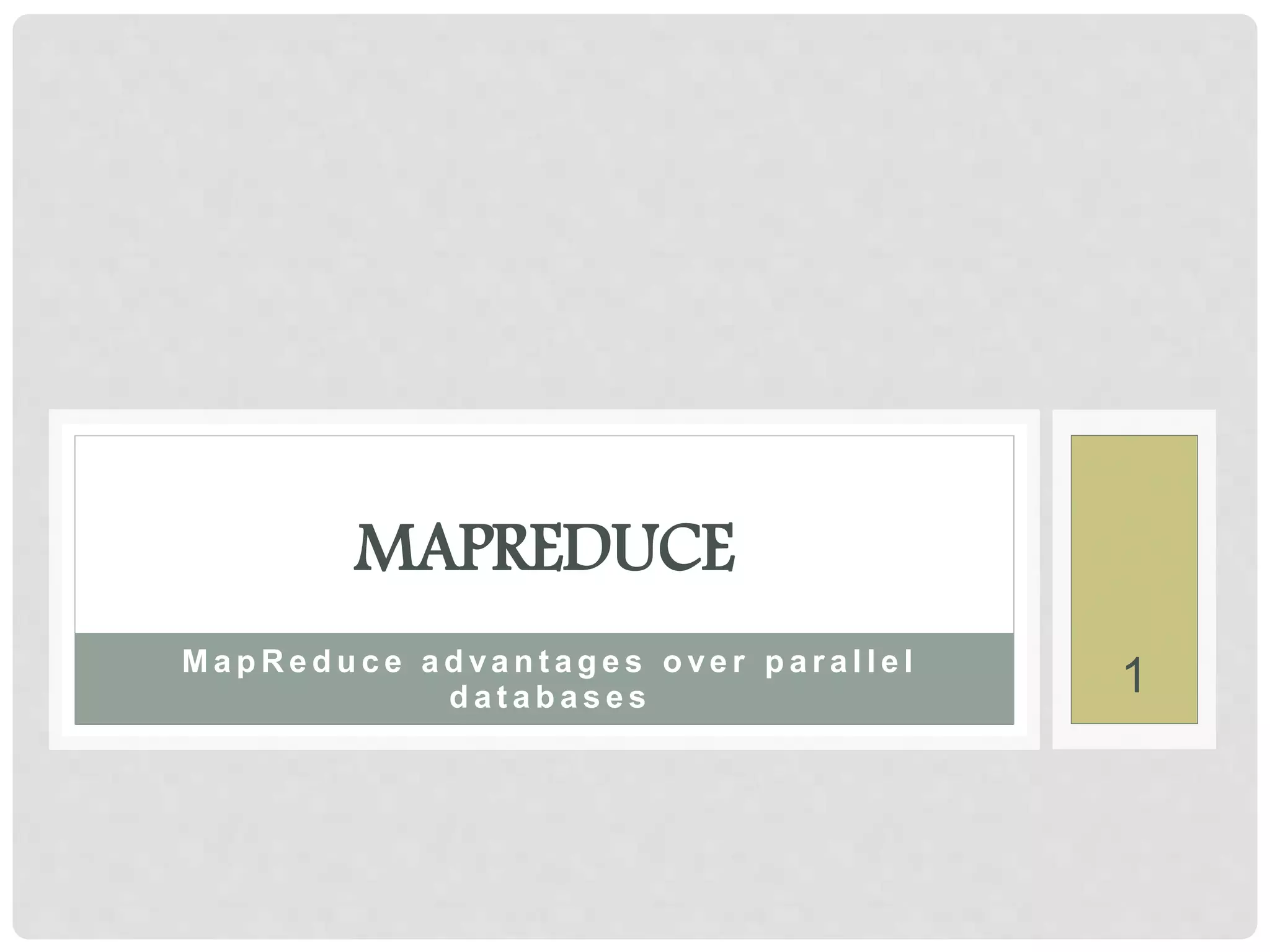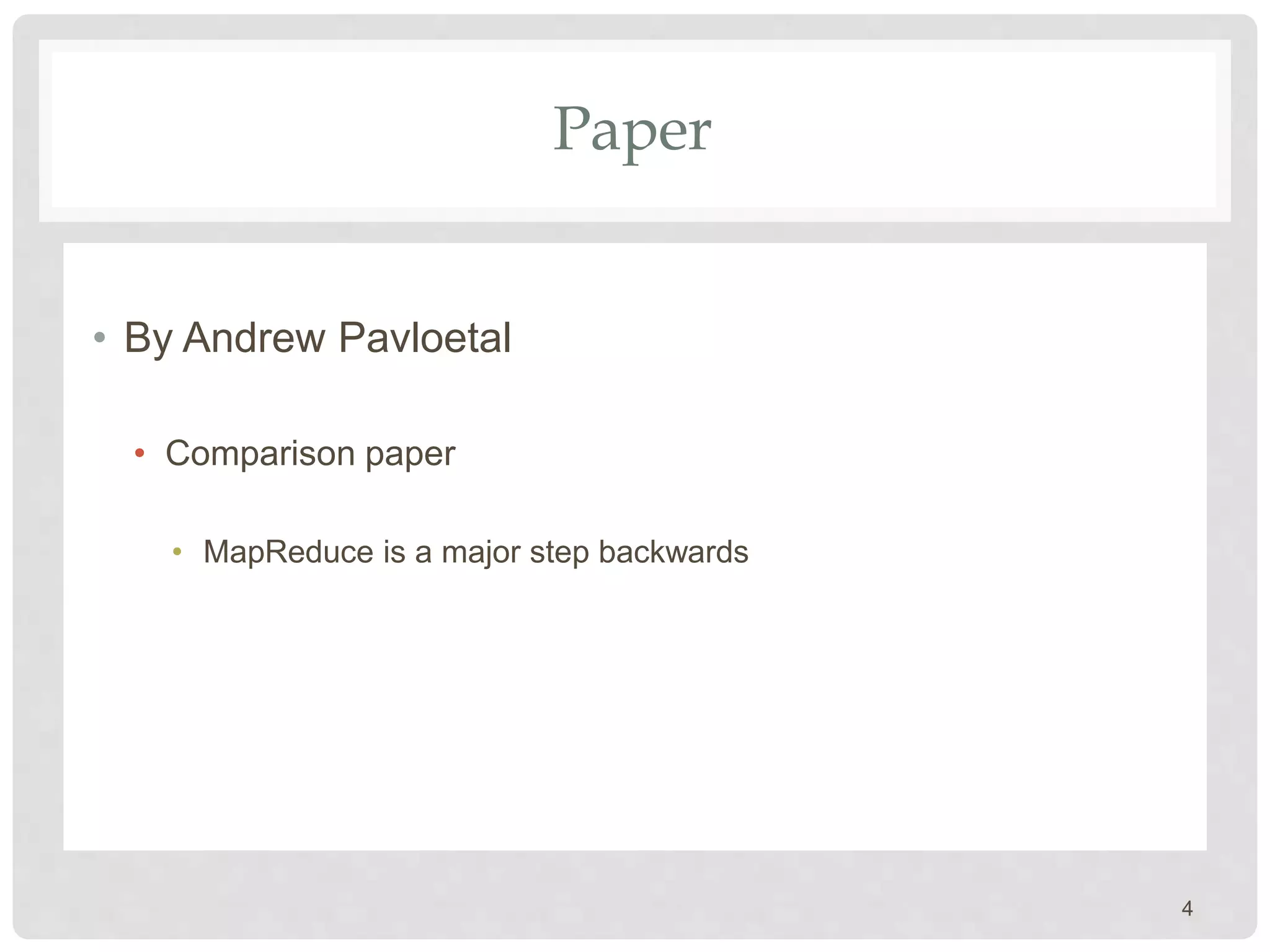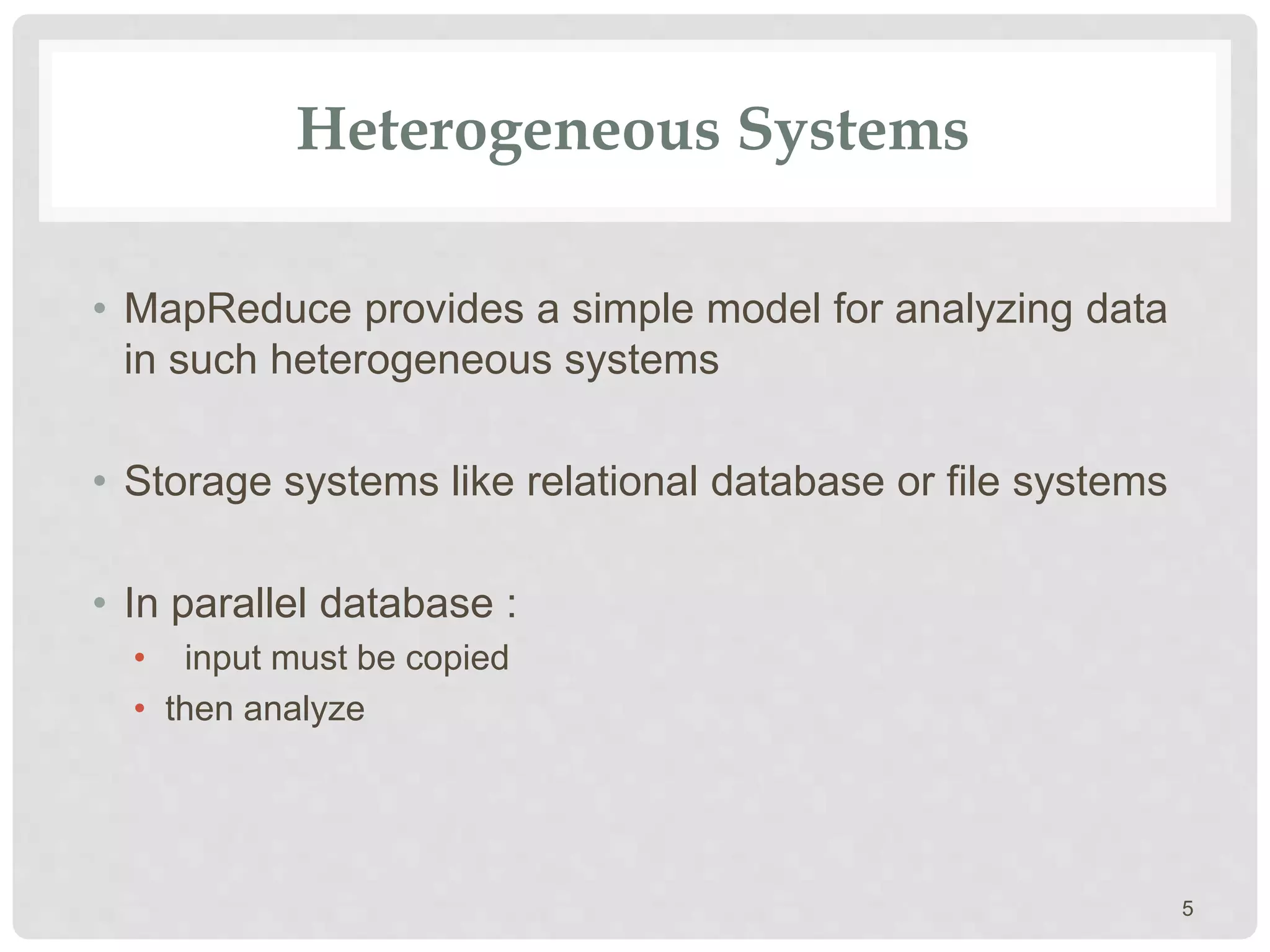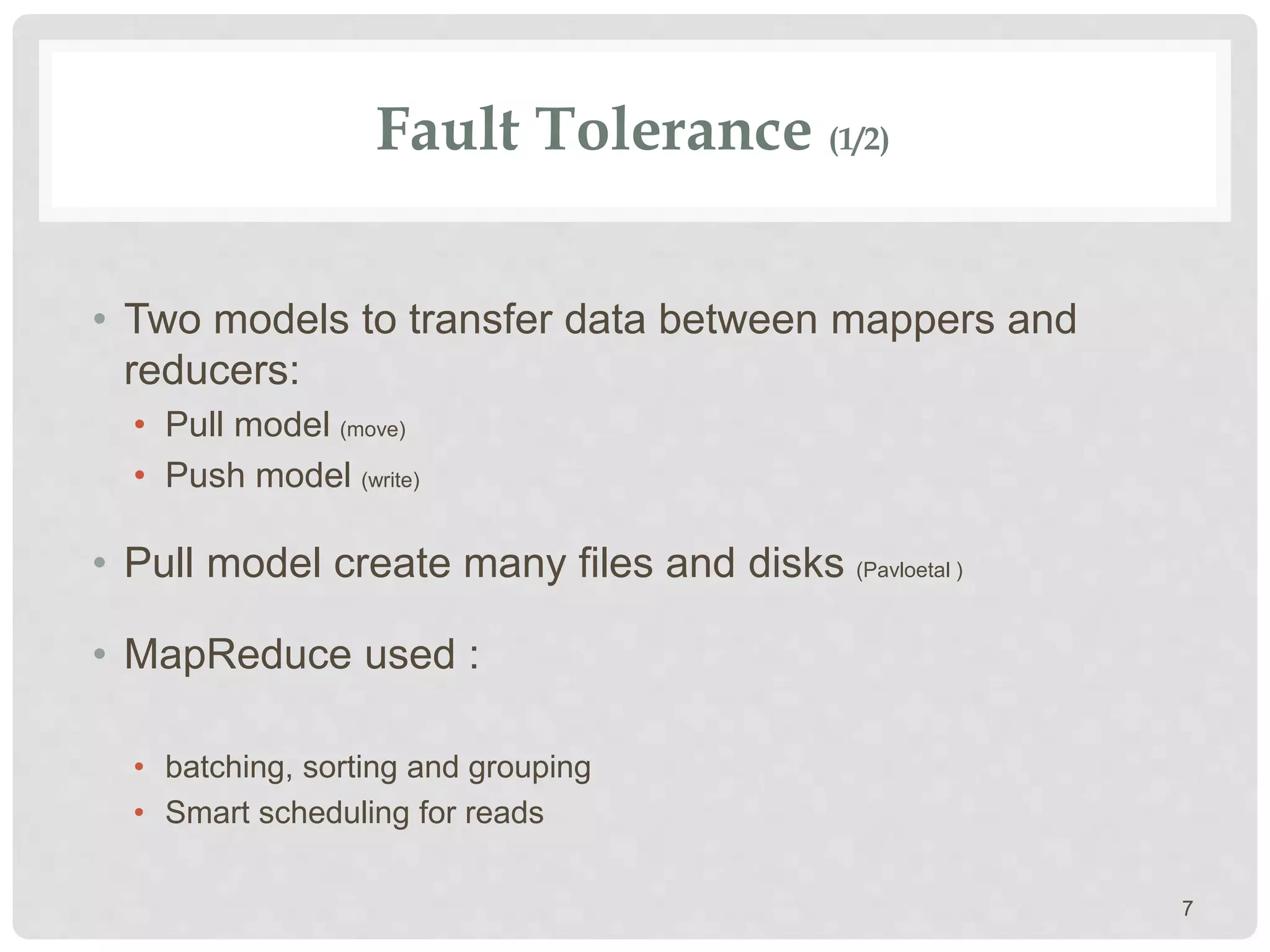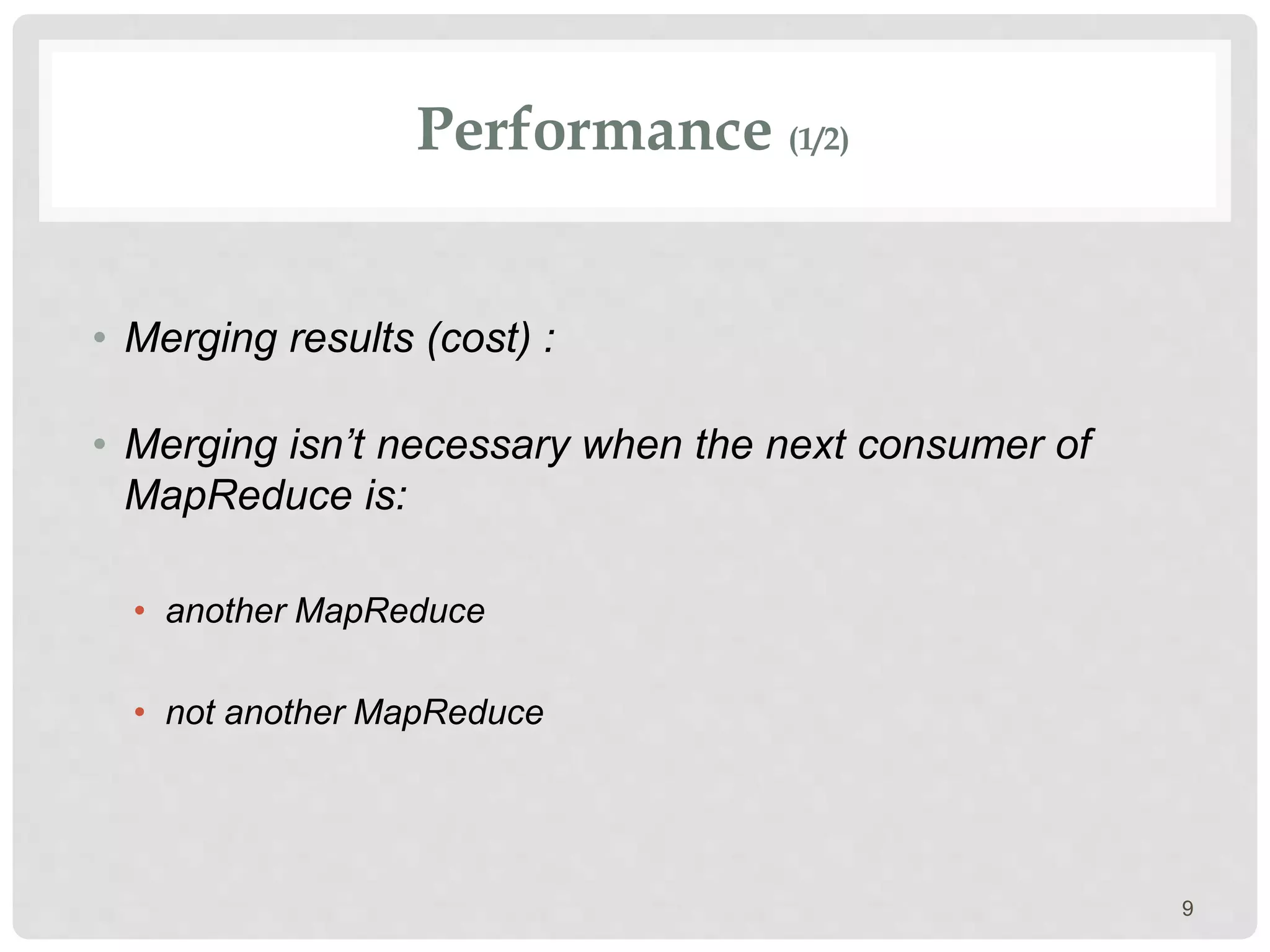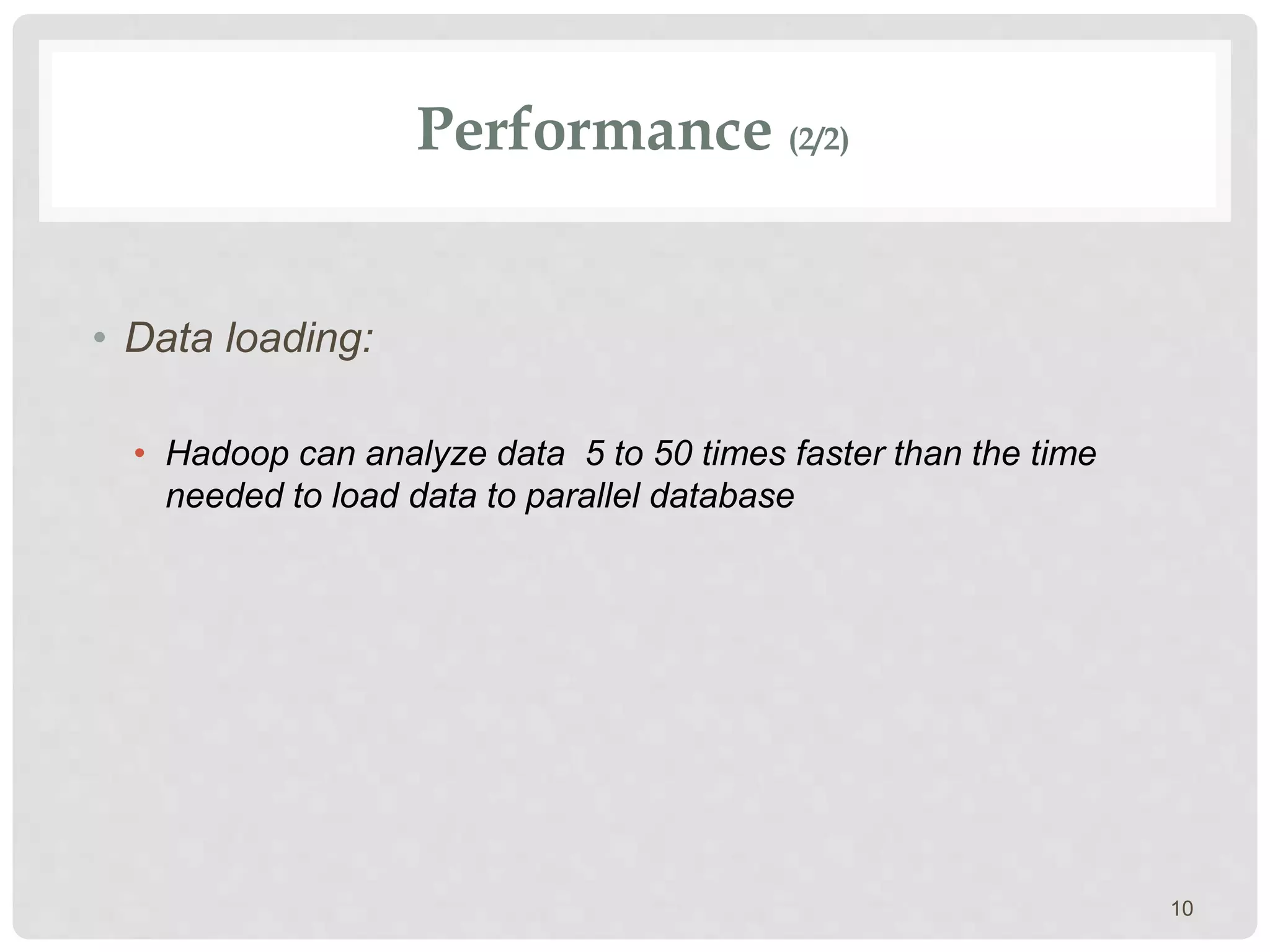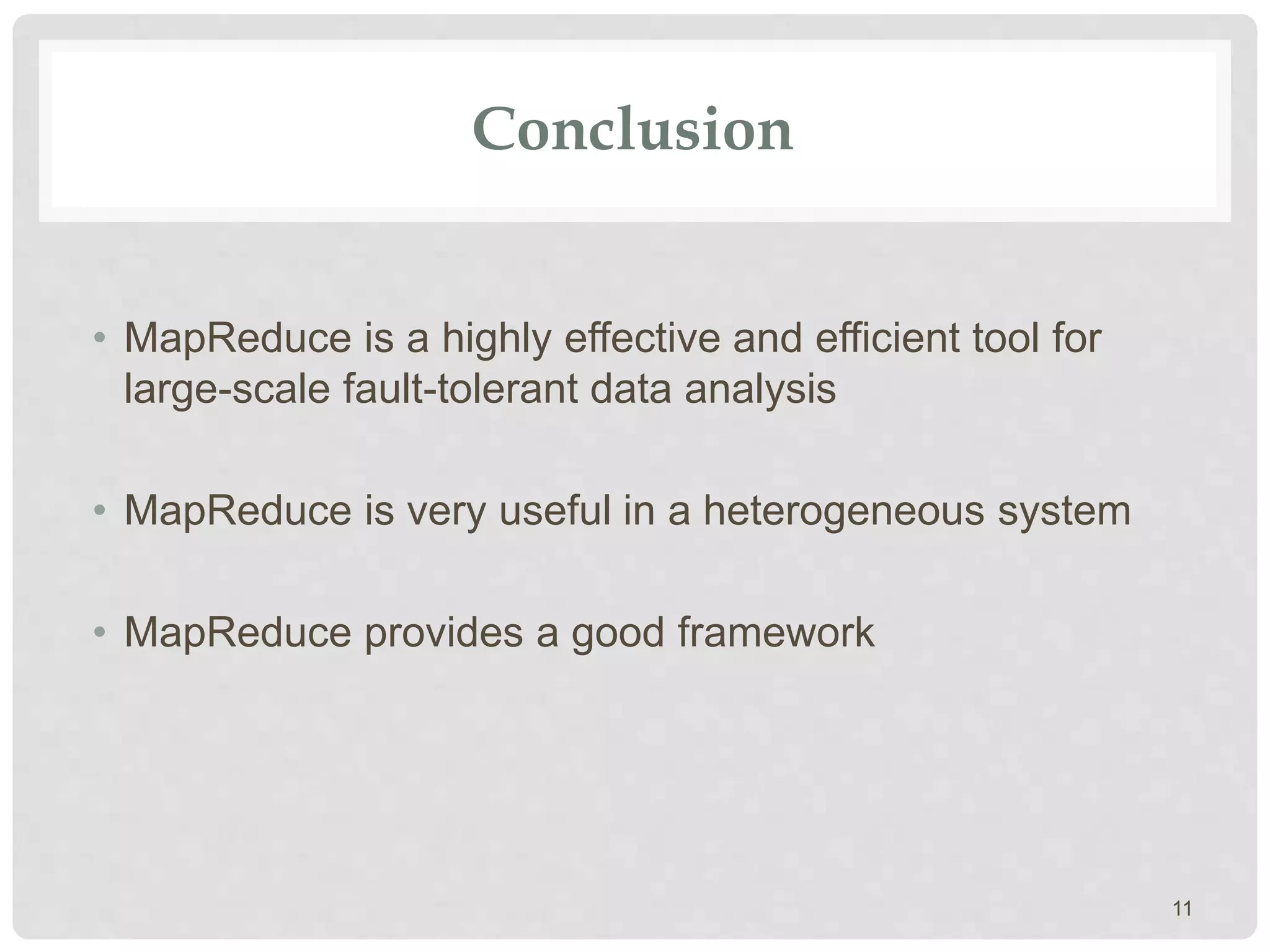MapReduce has several advantages over parallel databases for processing large datasets:
1) MapReduce can handle heterogeneous systems with different storage systems more easily than parallel databases which require data copying and analysis.
2) Complex functions are more straightforward to express in MapReduce's simple map and reduce model compared to SQL in parallel databases which can require complicated user defined functions.
3) MapReduce provides better fault tolerance than parallel databases by using techniques like batching, sorting, grouping and smart task scheduling during data transfers between mapping and reducing tasks.
